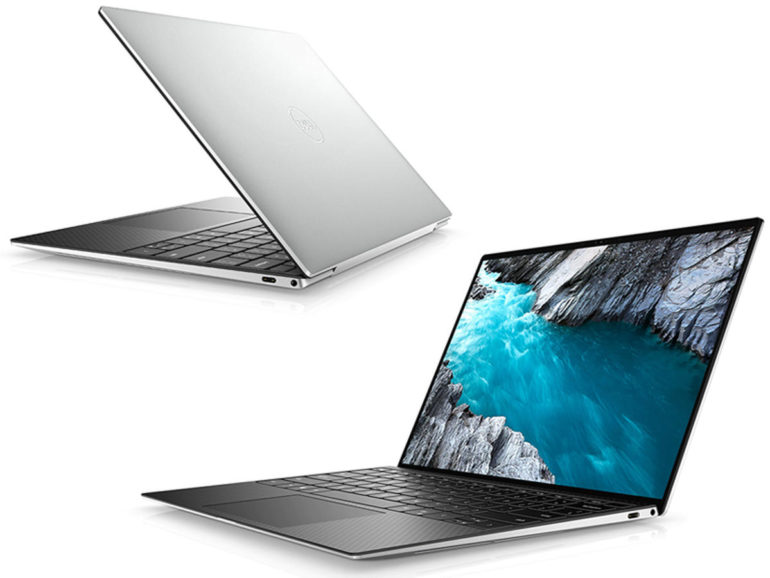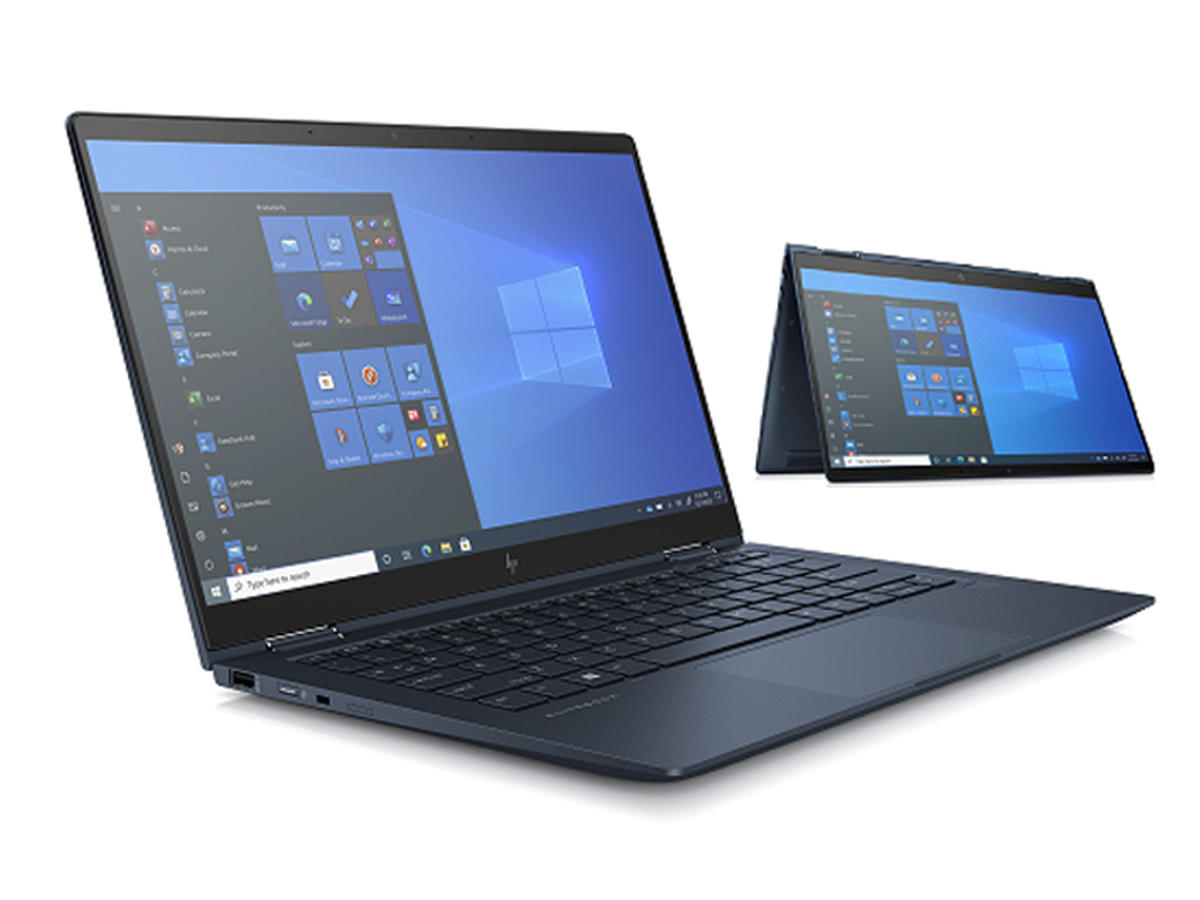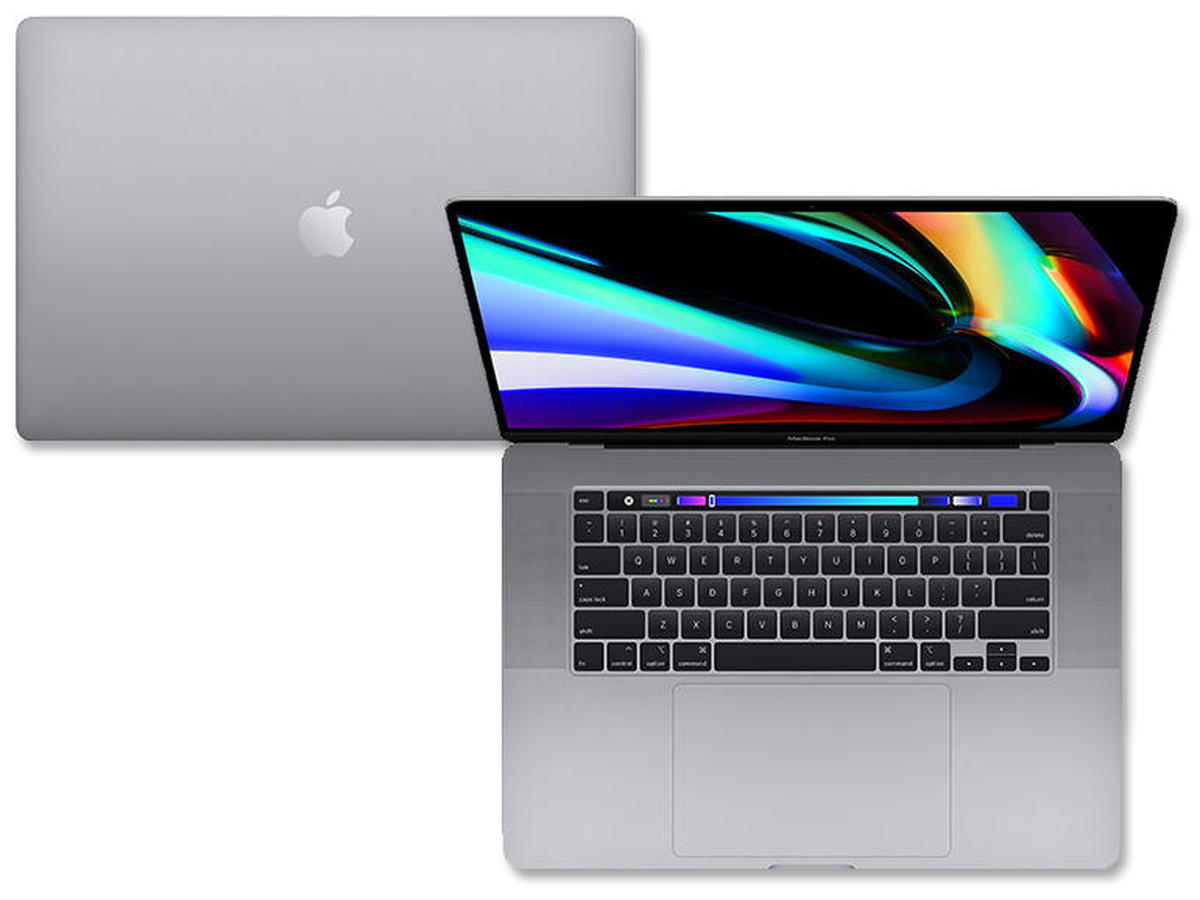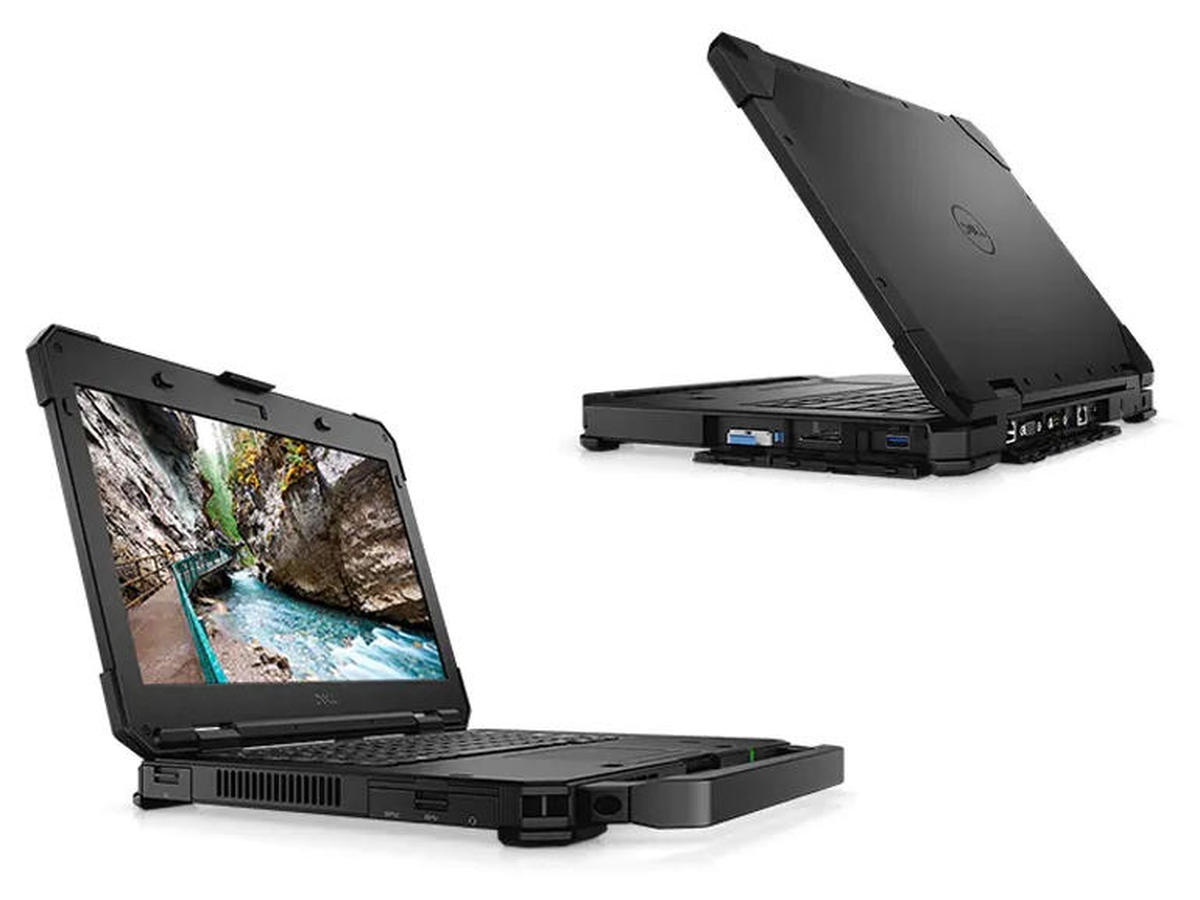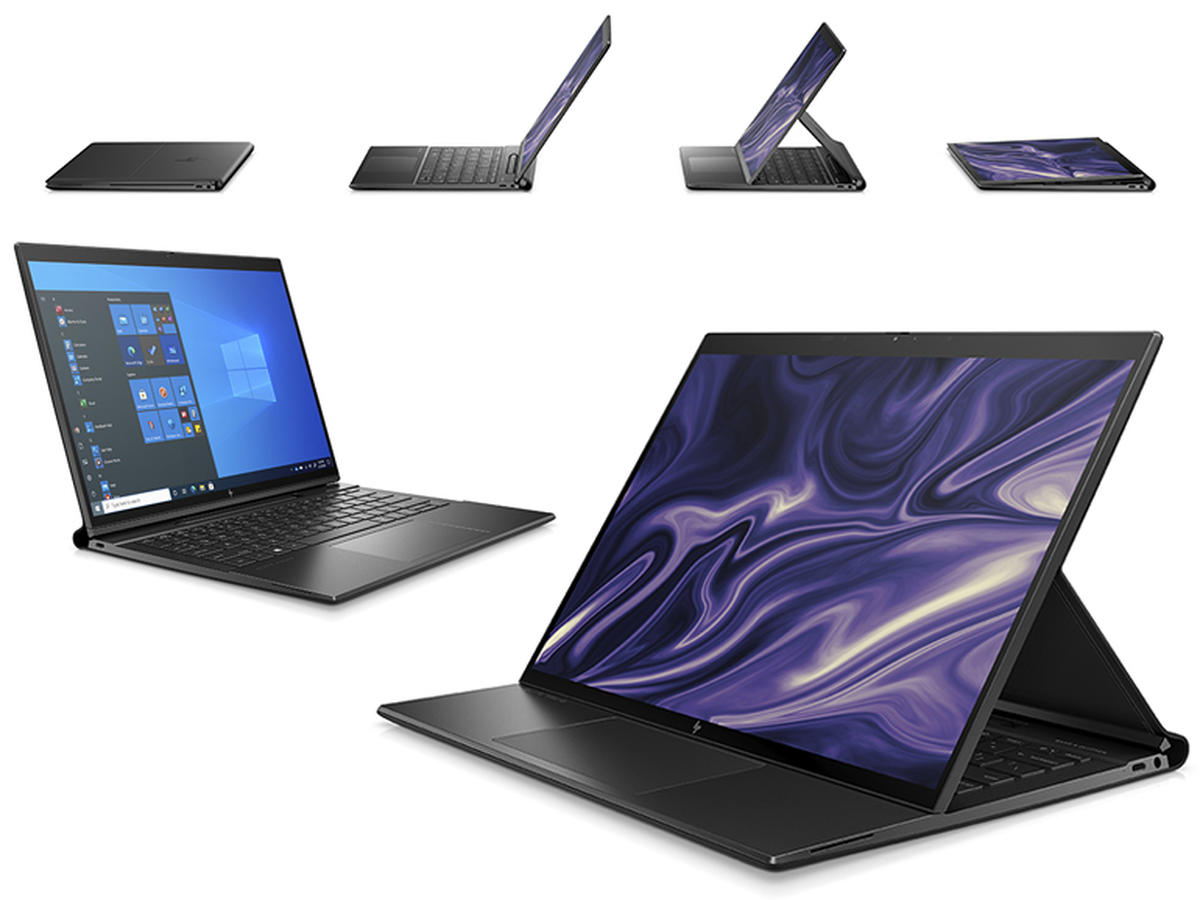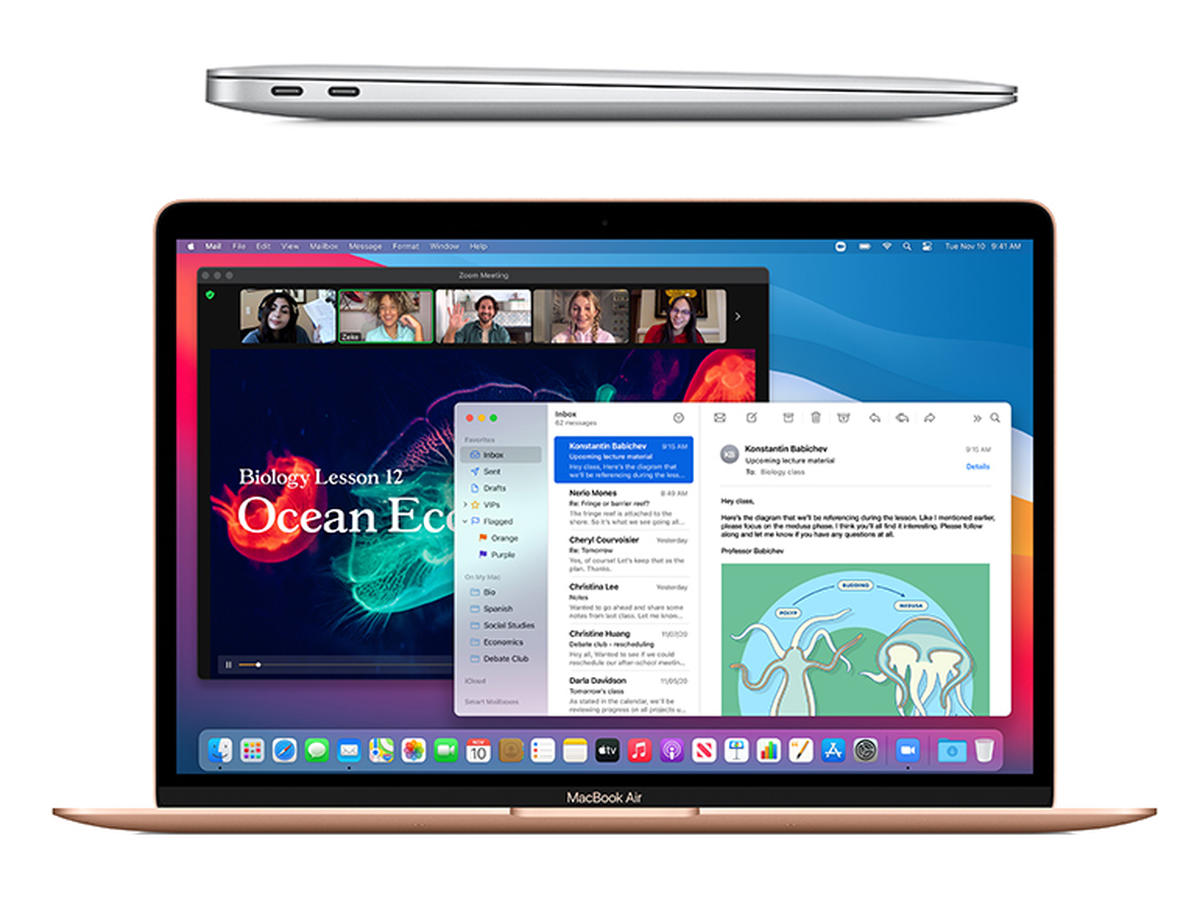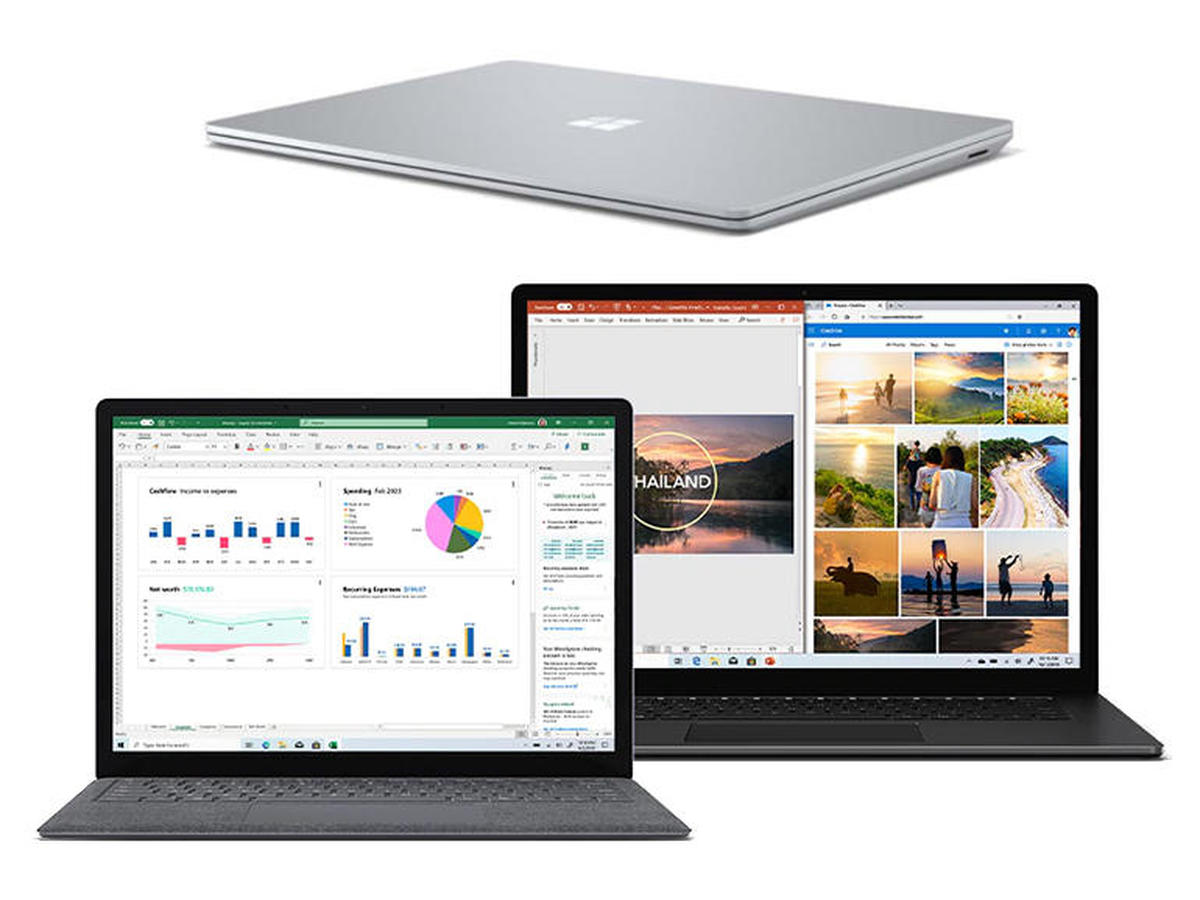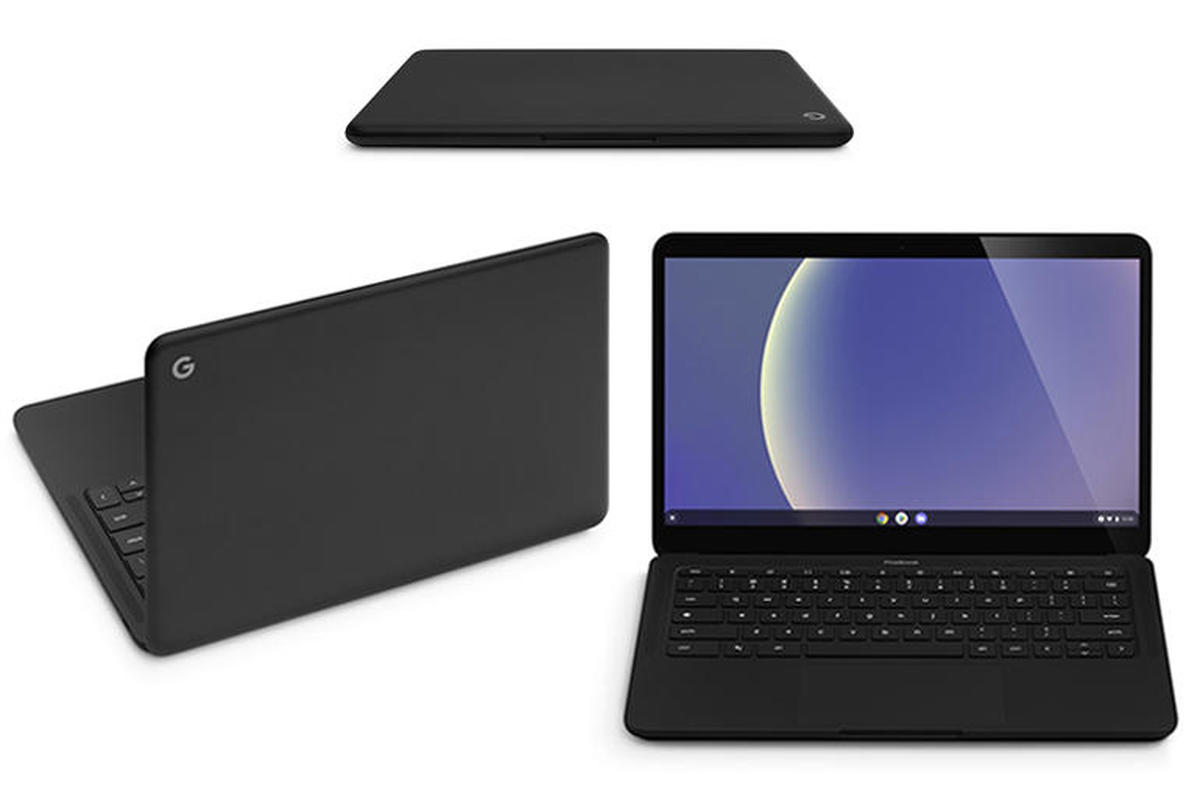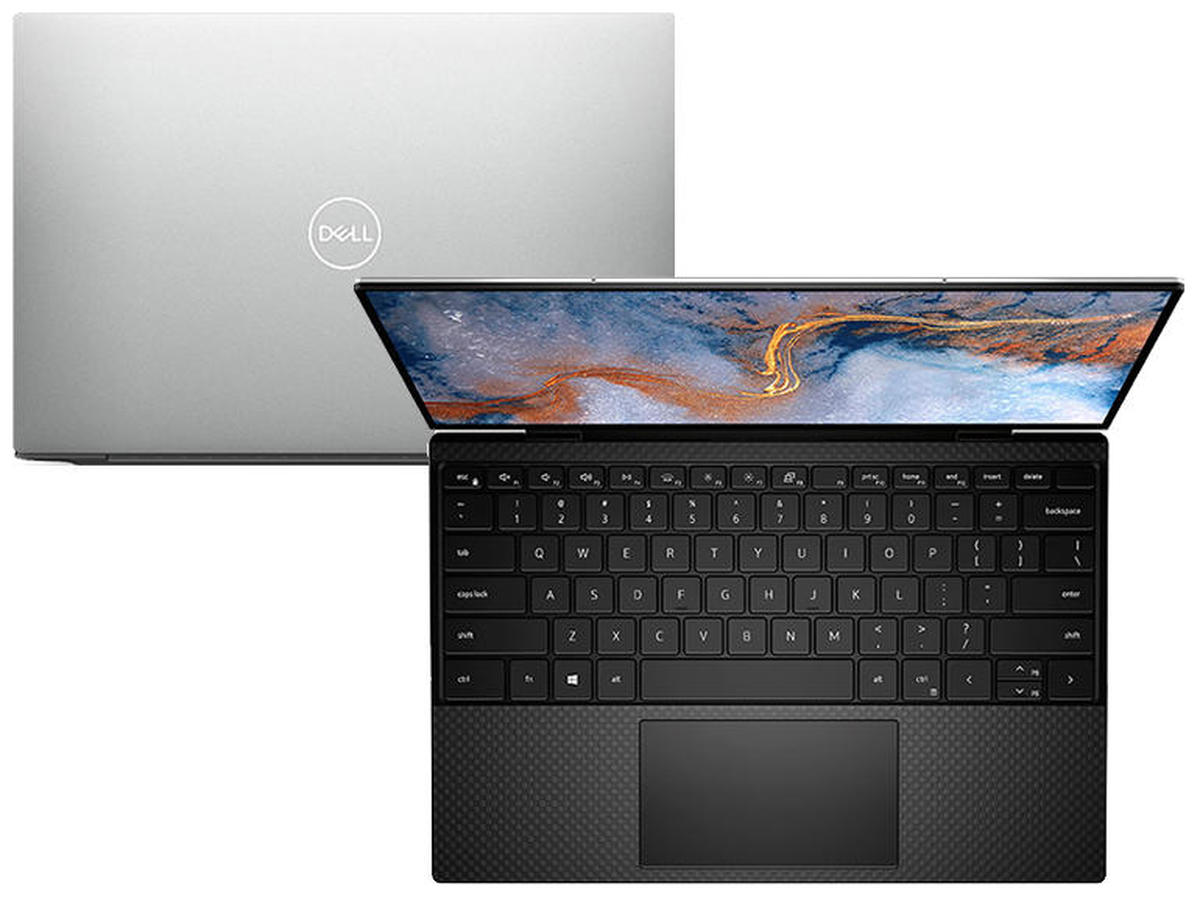Faced with the question “what’s the best laptop for 2021?” (or any other year), the first sensible response is “what do you want to use it for?” That’s because the ‘best’ laptop for office — or home-based knowledge workers, for example, will be very different from the kind of device that’s suitable for power users and creators, or for students and the otherwise cash-strapped, and so on. Then there are the platform enthusiasts who will only consider Windows, MacOS, Chrome OS or Linux devices, for whatever reason, or determined early adopters who must have the latest and greatest mobile technology.
As a result, this ‘best’ laptop roundup covers different use cases and compute platforms to provide an early-2021 overview of the cream of the laptop market. As always, though, individual requirements and preferences will vary, so when choosing a laptop check out other similar models, examine the specifications and price points, visit the manufacturers’ online forums to see how customer relations are working out in practice, get hands-on, if you can, to get a feel for the ergonomics — and, of course, read the reviews.
Also: Buy the laptop best for you: Windows 10 or MacOS, plus 10 more things to consider
Our top ten laptop categories are: Knowledge workers; Mobile professionals; Power users & creators; Budget-limited users; Field workers; Early adopters; Apple users; Microsoft Surface users; Chromebook users; and Linux users. If you want to know about gaming laptops, we suggest you head over to our sister site, CNET.
Dell XPS 13
OS: Windows 10 (Home, Pro) | CPU: Intel Core i3-1115G4, Core i5-1135G7, Core i7-1165G7, Core i7-1185G7 | GPU: Intel UHD Graphics (Core i3), Intel Iris Xe Graphics | RAM: 8GB, 16GB, 32GB | Storage: 256GB, 512GB, 1TB, 2TB | Screen: 13.4in. InfinityEdge, 1920 x 1200 (169ppi, non-touch/touch), 3840 x 2400 (338ppi, touch), 500 nits | Wireless: Bluetooth 5.1, 802.11ax (Wi-Fi 6) | Ports and slots: 2x USB-C/Thunderbolt 4, MicroSD | Camera: HD (720p) RGB & IR | Audio: 2 mics, stereo speakers, 3.5mm headphone/mic jack | Battery: 52Wh (14h 11m FHD+, 8h 12m 4K+/UHD+) | Dimensions: 295.7 x 198.7 x 14.8mm | Weight: 1.2kg (non-touch), 1.27kg (touch) | Price: From $1000 (Core i3), $1030 (Core i5), $1250 (Core i7)
Knowledge workers spend a lot of time staring at the screen and pounding the keyboard, mostly running a mix of productivity and collaboration apps. As well as a decent screen and keyboard, knowledge workers need solid all-round performance, a spare connection for an external monitor, if required, and a good webcam/mic/speaker combo for handling video calls (this will be particularly important if the user is also working remotely). Many devices could perform these duties, but the latest Dell XPS 13 currently leads the field, in our opinion.
Powered by 11th-generation Intel Core i3, 15 or i7 processors with integrated Intel (UHD or Iris Xe) Graphics, the 13.4-inch XPS 13 is compact and lightweight, yet durable. The minimal-bezel InfinityEdge display is available in FHD+ (non-touch/touch) or 4K+/UHD+ (touch) resolutions with 16:10 aspect ratio, while the keyboard is quiet, responsive and comfortable to type on at speed. All-day battery life should be achievable from the 52Wh battery, depending on the workload mix and screen resolution/brightness setting. It’s not cheap, especially if you add copious options (such as a Thunderbolt Dock), but it will serve you very well.
Read the review: Dell XPS 13 review
If a 13.3-inch primary screen is too small, we’ve also listed a couple of larger-screen contenders for knowledge/remote workers:
HP Elite Dragonfly
OS: Windows 10 (Home, Pro) | CPU: Intel Core i3-8145U, Core i5-8265U, Core i5-8365U vPro, Core i7-8565U, Core i7-8665U vPro | GPU: Intel UHD Graphics 620 | RAM: 8GB, 16GB | Storage: 128GB, 256GB, 512GB, 1TB, 2TB | Screen: 13.3in., 360-degree rotation; 1920 x 1080 touch, 400 nits; 1920 x 1080 touch + HP Sure View, 1000 nits; 3840 x 2160 touch, 550 nits | Wireless Bluetooth 5.0, 802.11ac (Wi-Fi 5), Tile Bluetooth tracker (option), 4G LTE (option) | Ports and slots: 2x USB-C/Thunderbolt 3, USB 3.1, HDMI 1.4, Nano SIM (for optional WWAN) | Camera: HD (720p) + IR | Audio: 3 mics, 4 stereo speakers, 3.5mm headphone/mic jack | Battery: 38Wh (16.5h), 56Wh (24.5h) | Dimensions: 304 x 198 x 16mm | Weight: 0.99kg | Price: from $1665 (Core i3-8145U), $1753 (i5-8265U), $1890 (i5-8365U vPro), $1888 (i7-8565U), $2082 (i7-8665U vPro)
Mobile professionals ask a lot of laptop designers: a usable and performant combination of lightweight, flexible configuration, sturdy build, connectivity, security, battery life and design credibility. It’s a tall order to shoehorn all of that into one product, but HP gives it an exemplary go with the Elite Dragonfly. (Note: we’re talking here about the existing model, based on 8th-generation Intel Core processors. At CES 2021, HP announced the 5G-equipped Elite Dragonfly G2 and Elite Dragonfly Max, based on the latest 11th-generation processors, which will ship later in 2021. Look out for reviews.)
The Elite Dragonfly ticks most of the boxes for mobile pros who don’t mind paying for a premium device – prices start at $1,665, but can rise to over $3,500 if you max out on the options. It has an elegant sub-1kg chassis with MIL-STD 801G credentials, a 360-degree FHD (non-touch/touch) or UHD (touch) screen with optional Sure View privacy and 1000-nit brightness on the FHD touch screen. The spill-resistant, backlit keyboard has a good, firm action and is not too loud, while the glass multi-touch touchpad works smoothly, as do the integrated mouse buttons. Options include mobile broadband (4G LTE) and integrated Tile tracking, and there’s a handy privacy slider for the HD/IR webcam. Video calls are well served by the combination of the webcam, 3-mic array and 4-speaker system, and both standard (38Wh) and long-life (56Wh) batteries are available — the latter to serve the power-hungry 4K (UHD) screen.
Read the review: HP Elite Dragonfly review
Even though mobile professionals have been considerably less mobile during the coronavirus pandemic, ultraportables and convertibles remain a growth area in the PC market, and there are many devices out there. If the Elite Dragonfly doesn’t do it for you, here are two more highly regarded contenders:
Apple MacBook Pro 16-inch (2019)
OS: MacOS (Big Sur) | CPU: Intel Core i7-9750H, Core i9-9880H, Core i9-9980HK | GPU: AMD Radeon Pro 5300M (4GB), Radeon Pro 5500M (4GB, 8GB), Radeon Pro 5600M (8GB) | RAM: 16GB, 32GB, 64GB | Storage: 512GB, 1TB, 2TB, 4TB, 8TB | Screen: 16in. Retina, 3072 x 1920 (226ppi), 500 nits | Wireless: Bluetooth 5.0, 802.11ac (Wi-Fi 5) | Ports and slots: 4x Thunderbolt 3/USB-C | Camera: 720p FaceTime HD | Audio: 3-mic array, 6 speakers, 3.5mm headphone jack | Battery: 100Wh (11h) | Dimensions: 358 x 246 x 16.2mm | Weight: 2kg | Price: from $2399 (Core i7), $2799 (Core i9, 2.3/4.8GHz), $2999 (Core i9, 2.4/5GHz)
Laptops designed for power users and creators are always going to command premium prices, because they need high-end features such as serious processing power, powerful discrete graphics, copious memory and storage, a large high-quality screen and robust industrial design. Apple is the premier purveyor of such devices, although the company had until recently been accused of neglecting its original core market.
That’s why the 16-inch MacBook Pro was widely welcomed on its release in November 2019. Its 16-inch screen fits into a chassis that’s only slightly (9mm) wider than its 15-inch predecessor, and the weight is a reasonable 2kg. The 3,072 by 1,920 (226dpi) Retina display is excellent and supports the DCI-P3 colour standard used in professional broadcasting. Apple also courts audio specialists with an impressive 3-mic, 6-speaker system.
Naturally it’s expensive, but with 9th-generation Intel Core i7 (6-core) and Core i9 (8-core) processor options, discrete AMD Radeon Pro 5x00M graphics, all-day battery life, and a redesigned (scissor-mechanism) keyboard, Apple’s top-end Intel-based MacBook Pro continues to cut a dash even in the Apple Silicon era.
Read the review: Apple MacBook Pro review
If a MacOS device doesn’t meet your requirements, we’ve also listed a couple of excellent workstation-class Windows contenders:
Acer Swift 3 (AMD)
OS: Windows 10 (Home) | CPU: AMD Ryzen 5 4500U, Ryzen 7 4700U | GPU: AMD Radeon Graphics (integrated) | RAM: 8GB, 16GB | Storage: 256GB, 512GB, 1TB | Screen: 14in. IPS, 1920 x 1080 (157ppi) | Wireless: Bluetooth 5.0, 802.11ax (Wi-Fi 6) | Ports and slots: USB-C, USB 3.2, USB 2.0, HDMI | Camera: HD (720p) | Audio: 1 mic, stereo speakers, 3.5mm headphone/mic combo | Battery: 48Wh (11h) | Dimensions: 323 x 218 x 18mm | Weight: 1.2kg | Price: from $619 (Ryzen 5 4500U), $800 (Ryzen 7 4700U)
Not everyone can afford the laptop they might like to have (students and employees of small businesses spring to mind), but that doesn’t mean you have to settle for a substandard device. The top-tier manufacturers all have ‘affordable’ ranges, and there’s any number of unashamedly budget brands, many of which offer excellent-value devices. Our choice, Acer’s AMD-powered Swift 3, is from a top-tier vendor and gets the nod thanks to its excellent combination of sub-$1,000 price and solid performance without making too many trade-offs on features, build quality or support options. (Note: Chromebooks, another rich seam of budget laptops, are covered elsewhere in this article.)
Key to the Swift 3’s value proposition is AMD’s Ryzen 4000 mobile processor series, which delivers excellent price/performance compared to Intel’s equivalent chips. (Note: at CES 2021 AMD announced the latest Ryzen 5000 mobile processors with significant claimed improvements in performance and power consumption.) Not only is the CPU, 8GB or 16GB of RAM and up to 1TB of storage well up to scratch, but wireless connectivity — Bluetooth 5.0 and 802.11ax (Wi-Fi 6) wi-fi — is bang up to date, which is impressive in this price band. The 14-inch FHD screen is perfectly adequate, although some may find that its matte finish and moderate brightness make it somewhat lacklustre. The Swift 3’s build quality is good, there’s a good selection of ports, the keyboard is backlit, and you can expect to get a full day’s (not too demanding) work done on battery power (Acer claims 11 hours). It’s not too heavy either, at 1.2kg. Starting at $619 (with a Ryzen 5 4500U processor), the Swift 3 is excellent value.
Read the review: Acer Swift 3 review CNET
As noted earlier, there’s any number of affordable laptops out there, and you can easily find usable Windows 10 devices for under $250 if that’s your budget limit. If you’ve got a bit more to spend, here’s two more good-value laptops from top vendors:
Best for field workers
Dell Latitude 5420 Rugged
OS: Windows 10 (Pro), Linux (Ubuntu 18.04) | CPU: Core i3-7130U, Core i5-8350U | GPU: Intel HD 620 Graphics | RAM: 8GB, 16GB, 32GB | Storage: 128GB, 256GB, 512GB, 1TB, 2TB | Screen: 14in. WVA, 1920 x 1080 (non-touch, non-touch/outdoor-readable, touch/outdoor-readable) | Wireless: Bluetooth 4.2, 802.11ac (Wi-Fi 5), 4G LTE (option) | Ports and slots: 3x USB 3.0, USB-C, RS-232 serial, RJ-45 Ethernet, HDMI, SD card slot, SIM slot, SmartCard reader (option) | Cameras: FHD web or IR camera with privacy shutter (option) | Audio: 2 mics, speaker, 3.5mm headphone/mic combo jack | Battery: 51Wh, optional 2nd 51Wh hot-swap battery | Dimensions: 347 x 244 x 32.8mm (ex. bumpers & handle) | Weight: from 2.22kg (1 battery, no handle) | Price: from $1399 (Core i3), $1879 (Core i5)
Laptops must often brave the elements, which can include bright sunshine, rain, a dust storm, baking heat, serious vibration, and drops from a variety of heights onto different surfaces. No wonder that ‘rugged’ laptops come in many shades — ‘extreme’ or ‘fully’ rugged, ‘semi’ or ‘business’ rugged, for example. Two main classifications are used to assess the ruggedness of laptops and other equipment: the US military’s MIL-STD 810 series (commonly 810G, or the latest 810H); and the IP or Ingress Protection code. There are numerous MIL-STD 810 tests, and most laptops will only undergo a subset, so check the specs carefully to see which they are. The IP code reports two numbers, the first concerning resistance to solids (5 denotes ‘dust protected’, for example, while 6 means a device is ‘dust tight’) and the second to liquids (1 = ‘dripping water’, 9K = ‘powerful high-temperature water jets’).
Our choice in this tough-laptop category, Dell’s 14-inch Latitude 5420 Rugged Business Laptop, isn’t the most bulletproof portable computer on the market by any means, but it offers a good mix of price, performance, features and robustness for business users. Like all rugged laptops, the Latitude 5420 is bulkier and heavier than mainstream devices, thanks to extra protection for the screen and keyboard sections. Still, it weighs a reasonable (for its class) 2.22kg with one battery and no (optional) handle. You can specify a second hot-swappable 51Wh battery to ensure greater longevity in the field. The 14-inch FHD screen comes in touch, non-touch and outdoor-readable versions, and there’s plenty of configurable wired and wireless connectivity, including Ethernet and (optional) 4G LTE broadband. If you need a portable computer that can take a few knocks, this is an excellent choice — especially as you can specify Linux (Ubuntu 18.04) as well as Windows 10 Pro.
Read the review: Dell Latitude 5240 Rugged review
Dell has the widest range of rugged laptops among the top-tier laptop-makers, but there are a number of specialist vendors, including Getac, Xplore, DT Research and Panasonic. The latter’s Toughbooks are probably the best-known specialist brand. Here’s a couple of notable examples:
HP Elite Folio
OS: Windows 10 (Pro) | CPU: Qualcomm Snapdragon 8cx Gen 2 5G Compute Platform | GPU: Qualcomm Adreno GPU | RAM: up to 16GB | Storage: up to 512GB | Screen: 13.5in. 1920 x 1280 Edge-to-Edge Glass, 10-point multi-touch | Wireless: Bluetooth LE 5.0, 802.11ax (Wi-Fi 6), 4G LTE & 5G mobile broadband | Ports and slots: 2x USB-C 3.2, Nano SIM | Camera: HD IR + hybrid Y2.2mm HD webcam | Audio: 2x front-facing mics, 4x stereo speakers, 3.5mm headphone/mic combo jack | Battery: up to 24.5h of local video playback | Dimensions: 299 x 230 x 15.9mm | Weight: 1.3kg | Price: TBA (February 2021)
A subset of the laptop-buying population will always be hankering after the latest form factors and platforms, and CES is the place to get a first look at what’s in store for the coming year. Despite being online-only due to the coronavirus pandemic, CES 2021 didn’t disappoint, offering up a healthy crop of cutting-edge industrial designs and configurations.
We’ve picked out HP’s Elite Folio, a 13.5-inch 2-in-1 device, because it shows how Windows laptops are developing in response to Apple’s Arm-based M1 MacBooks. The Elite Folio is based on Qualcomm’s Snapdragon 8cx Gen2 platform, which includes both 4G LTE and 5G modems, along with Wi-Fi 6. The message is that this ultraportable (1.3kg) 2-in-1 is ‘always on, always connected’, with claimed battery life of up to 24.5 hours of ‘local video playback’. With optional Sure View privacy for the touch screen, an Elite Slim Active Pen (with on-device storage and charging), a well-specified audio-video subsystem and fanless operation, this will be a sought-after laptop for the well-heeled mobile professional. It will be available in February, at a yet-to-announced price.
Also: CES 2021: HP updates home office line-up
The Elite Folio wasn’t the only eye-catching laptop at CES 2021, of course. Here’s a couple of other leading contenders for the early adopter (see also ZDNet’s Best CES laptops roundup):
Apple MacBook Air (Late 2020)
CPU: Apple M1 | GPU: Apple M1 (7 or 8 cores) | RAM: 8GB, 16GB | Storage: 256GB, 512GB, 1TB, 2TB | Screen: 13.3in. Retina, 2560 x 1600 (227ppi), 400 nits | Wireless: Bluetooth 5.0, 802.11ax (Wi-Fi 6) | Ports and slots: 2x Thunderbolt 3/USB4 | Camera: 720p FaceTime HD | Audio: 3-mic array, stereo speakers, 3.5mm headphone jack | Battery: 49.9Wh (15h) | Dimensions: 304 x 212 x 4.1-16.1mm | Weight 1.29kg | Price: From $999 (7-core GPU), $1249 (8-core GPU)
Apple announced its ARM-based M1 Macs in November, and within days benchmarks showed the new MacBooks delivering very impressive performance, even when running software written for the Intel platform using Apple’s Rosetta 2 translation technology. Coupled with low power consumption, this gives the M1 platform cutting-edge performance per watt, presenting a big challenge to the Windows ecosystem. Like the A-series chips in Apple’s iPhones, iPads and Watches, the M1 is a system-on-chip (SoC) design, delivering multiple functions on a single piece of silicon. Built on a 5nm process, the M1 has 16 billion transistors and a thermal design power (TDP) of 10 watts (in the MacBook Air).
The MacBook Air may be Apple’s entry-level laptop, but being Apple that means a starting price of $999. Outwardly it looks almost identical to its Intel-based predecessor, although the 227ppi Retina display now supports the professional DCI-P3 colour standard and the weight has increased slightly (by 40g to 1.29kg). Wireless connectivity is up to date (Bluetooth 5, Wi-Fi 6) and the two Thunderbolt 3 ports now support USB4, although the webcam is still a 720p FaceTime unit. RAM and storage upgrades (at purchase time) are limited and pricey, but it’s the performance and battery life that make the M1 MacBook Air stand out. We recorded a Geekbench 5 (multi core) CPU score of 7590, which blows away the early 2020 Intel Core i7-based MacBook Air’s score of 3050. Meanwhile, our battery tests recorded the M1 model lasting for 17 hours 19 minutes, compared to around 11 hours for the Intel-based MacBook Air.
Read the review: MacBook Air (2020) review
Two other MacBook models – the M1-based 13.3-inch MacBook Pro with a bigger battery (58.2Wh) and the Intel-based 16-inch MacBook Pro — are also excellent choices, with the latter particularly suitable for creators (see above):
Microsoft Surface Laptop 3
OS: Windows 10 (Home, Pro) | CPU: Intel Core i5-1035G7, Core i7-1065G7 (13.5in.); AMD Ryzen 5 3580U, Ryzen 7 3780U (15in.) | GPU: Intel Iris Plus Graphics (13.5in.), AMD Radeon Vega 9, Radeon RX Vega 11 (15in.) | RAM: 8GB, 16GB | Storage: 128GB, 256GB, 512GB, 1TB | Screen: 13.5in. PixelSense, 2256 x 1504 (201ppi), 15in. PixelSense, 2496 x 1664 (201ppi), 10pt multi-touch | Wireless: Bluetooth 5.0, 802.11ax/Wi-Fi 6 (13.5in.), 802.11ac/Wi-Fi 5 (15in.) | Ports and slots: USB-C, USB-A, Surface Connect | Camera: Windows Hello, 720p HD f2.0 | Audio: 2 far-field Studio Mics, Omnisonic speakers with Dolby Audio, 3.5mm headphone jack | Battery: 46Wh (11.5h) | Dimensions: 308 x 223 x 14.5mm (13.5in.), 339.5 x 244 x 14.7mm (15in.) | Weight: 1.26/1.29kg (13.5in.), 1.54kg (15in.) | Price: From $800 (13.5in., Intel), from $900 (15in., AMD)
Microsoft’s Surface devices made their debut in 2012 with a 10.6-inch tablet sporting an optional attachable keyboard, running the ill-fated Windows RT on an ARM-based Nvidia Tegra SoC. Since then, the brand has established itself as a design and technology showcase for the Windows platform, evolving into a profitable business for Microsoft and picking up a hard core of devotees. Today the Surface range boasts eight laptops of various descriptions: Surface Laptop Go (12.4in.), Surface Pro X (13in. tablet/laptop), Surface Book 3 (13.5in. & 15in.), Surface Go 2 (10.2in. tablet/laptop), Surface Laptop 3 (13.5in. & 15in) and Surface Pro 7/7+ (12.3in. tablet/laptop). The next generation of Surface devices is expected to be unveiled early in 2021.
Laptop users seeking a Surface device for mainstream productivity tasks are probably best directed to the Surface Laptop 3, which offers two models with different screen size/compute platform combinations: 13.5-inch/10th-generation Intel Core, and 15-inch/AMD Ryzen 3×80 series. With an elegant aluminium chassis and available in a range of colours and finishes, both models have 201ppi PixelSense touch screens with 3:2 apsect ratios. The key differences, apart from screen size and the CPU/GPU combo, concern wireless connectivity: the 13.5-inch/Intel model has the latest Wi-Fi 6 (802.11ax), while the 15-inch/AMD model has Wi-Fi 5 (802.11ac). Naturally there are weight differences too: 1.26kg (Cobalt Blue & Platinum) and 1.29kg (Sandstone & Matte Black) for the 13.5-inch, and 1.54kg for the 15-inch (Platium & Matte Black). The main disappointment for ZDNet’s reviewers with both models was battery life: Microsoft claims up to 11.5 hours of ‘typical usage’, but our tests came in at more like 6 hours.
Read the reviews: 13.5-inch Surface Laptop 3 review | 15-inch Surface Laptop 3 review
As well as these traditional laptops, the Surface range offers two convertible form factors — the tablet with attachable keyboard (Surface Pro) and the laptop with detachable screen section (Surface Book):
Google Pixelbook Go
OS: Chrome OS | CPU: Intel Core m3-8100Y, Core i5-8220Y, Core i7-8500Y | GPU: Intel UHD Graphics 615 | RAM: 8GB, 16GB | Storage: 64GB, 128GB, 256GB | Screen: 13.3in. 1920 x 1080 (166ppi), 3840 x 2160 (331ppi), touch screen | Wireless: Bluetooth 4.2, 802.11ac (Wi-Fi5) | Ports and slots: 2x USB-C | Camera: 2MP Duo Cam (1080p/60fps) | Audio: 2 mics, stereo speakers, 3.5mm headphone jack | Battery: up to 12h | Dimensions: 206 x 311 x 13.4mm | Weight: 1.06kg (FHD), 1.09kg (UHD) | Price: from $649 (m3), $849 (i5), $1,399 (i7)
Chromebooks have come into their own during the coronavirus pandemic, their combination of simplicity, affordability and long battery life delivering exactly what was needed for students and knowledge workers forced to study and work from home. According to analyst firm Canalys, Chromebooks hit record worldwide shipment volumes in Q4 2020 with 11.2 million units, up 287% year on year, while 30.7m units were sold during the full year. That’s impressive performance, although Chromebooks still only represent some 6.7% of the total PC/tablet market.
Chromebooks come in many shapes and sizes, and at many price points, but the pick of the crop is Google’s Pixelbook Go, a premium device that costs from $649 with an 8th-generation Intel Core i3 processor, rising to $1,399 for a Core i7 model. There are many plus points about the Pixelbook Go, including its sleek fit and finish, high-quality 13.3-inch 166ppi or 331ppi screen, up to 12 hours of battery life with fast charging, an excellent keyboard, two USB-C ports and a 3.5mm headphone jack, and weight just over 1kg.
Read the review: Google Pixelbook Go review
Here are a couple of other excellent Chromebooks (for more suggestions, see ZDNet’s roundup):
Dell XPS 13 Developer Edition
OS: Ubuntu Linux 20.04 | CPU: Core i5-1135G7, Core i7-1165G7 | GPU: Intel Iris Xe Graphics | RAM: 8GB, 16GB | Storage: 256GB, 512GB, 1TB, 2TB | Screen: 13.4in. InfinityEdge, 1920 x 1200 (169ppi, non-touch, touch), 3840 x 2400 (338ppi, touch), 500 nits | Wireless: Bluetooth 5.1, 802.11ax (Wi-Fi 6) | Ports and slots: 2x USB-C/Thunderbolt 4, MicroSD | Camera: HD (720p) RGB & IR | Audio: 2 mics, stereo speakers, 3.5mm headphone/mic jack | Battery: 52Wh (14h 11m FHD+, 8h 12m 4K+/UHD+) | Dimensions: 295.7 x 198.7 x 14.8mm | Weight: 1.2kg (non-touch), 1.27kg (touch) | Price: from $899 (Core i5), $1079 (Core i7)
Linux has a small but dedicated following among desktop and laptop users — particularly developers — and PC manufacturers have taken notice in recent years. For example, Lenovo recently certified its high-end laptops and desktops for Linux, and preloads its ThinkStation and ThinkPad P Series workstations with Red Hat Enterprise Linux and Ubuntu LTS. You can, of course, install a Linux distro on all manner of laptops, but for peace of mind you’ll want to buy from a ‘name’ brand, preferably with Linux pre-installed.
Read the review: Dell XPS Linux review
Which brings us to another win for Dell’s XPS 13 — this time, the Developer Edition with Ubuntu Linux 20.04 on board. The (excellent) hardware is identical to that described earlier for the regular XPS 13 running Windows 10. Developers are likely to want to attach multiple peripherals — an external monitor, extra storage, for example — and there are just two USB-C/Thunderbolt 4 ports (one of which is required for power). This means a compatible docking station will almost certainly have to be added to the laptop’s price, which starts at $899 for a Core i5 processor, or $1079 with a Core i7 at the helm.
